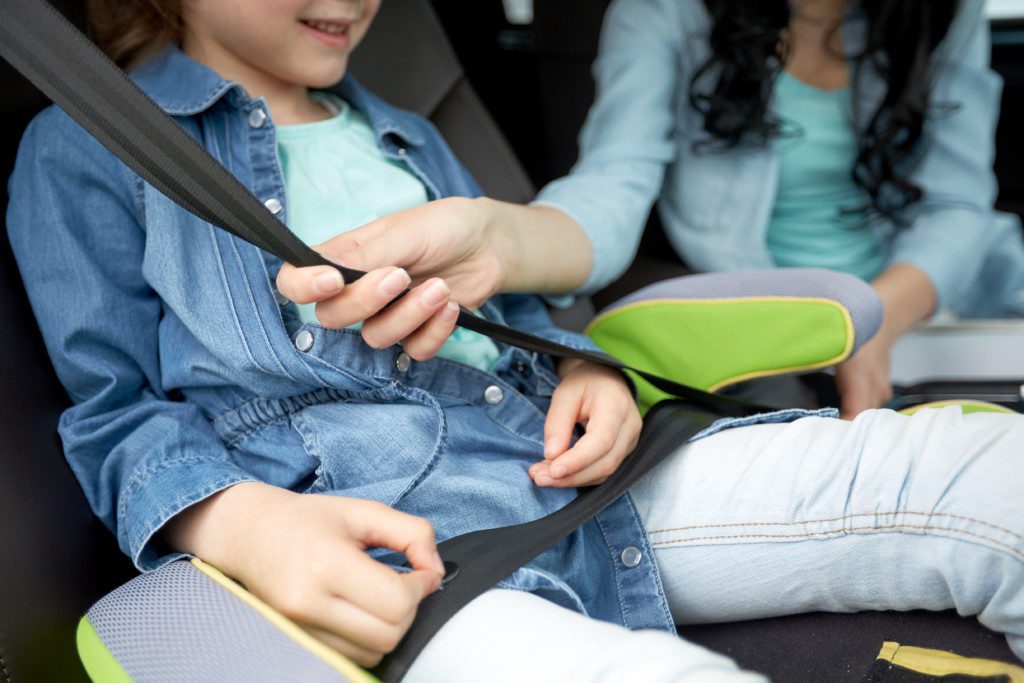When we take home our babes from the hospital, we ride in the back seat. We triple check the straps. We cringe at every pothole and curse any car that dares to come within 10 feet of our car. In short, we begin our parenting lives militant about car seat safety.
Somewhere between birth and booster seat, however, our attention to car seat science seems to disappear. The laws mislead us into thinking they represent the most up-to-date evidence in traffic death prevention. Meanwhile, our neighbors influence us to move from seat to seat by social precedent. As a result, we allow our kids to march from car seat to seat belt, forgetting what proper car restraints actually do to keep our kids safe.
The problem is that when we allow our kids to move forward in the car seat progression too quickly, we are placing them at increased risk of injury and death. As a pediatrician, I talk to families every day about the work that car seats do for our kids. My experience is that when parents are reminded of the science behind clicking the harness and snugging the straps, kids ride more safely. And it all comes down to simple physics.
The most deadly car accidents involve frontal impact. When a front impact collision occurs, everything inside the car continues moving towards the point of impact. This includes our human bodies riding inside the vehicle. The goal of our car’s safety mechanisms like crumple zones, airbags, and seatbelts is to provide the restraining force to stop our bodies from this continuing forward movement. This allows our bodies to “ride down the crash,” while using our strongest body parts to protect us.
Specifically, seat belts help keep us safe by being force distributors. The more evenly the force of the crash is distributed throughout our bodies, the less injury the force creates. When we are secured by a seat belt, the strength of the crash is spread over the 3 points that the belt is in contact with our body. As we add more points of restraint, each point experiences less force and decreases the potential damage. Car seats, therefore, extend the work of the seat belt by increasing the force distribution.
Let’s sprinkle a little Newtonian physics on this situation. Don’t worry, I’ve done the math. The average 4-year-old weights 40 pounds. To come to a stop after a collision at 40 miles per hour, her body needs to withstand at least 1600 pounds of restraining force. That’s a lot. Using this logic, it begins to make sense why rear-facing car seats provide the safest way to ride in the car. When secure in a rear-facing seat, that 1600 pounds of force is distributed over the entire back of the car seat and evenly through the child’s whole body. Once forward-facing, however, the force is distributed through only 5 points (320 pounds per contact point) on the torso, while leaving the head and neck unsupported. A booster seat and seat belt? Down to 3 points of distribution (533 pounds per contact point) over a maturing skeleton (see #3 below.)
When we remember the enormous work these devices are doing to keep our kids safe, it only makes sense that we have to get this right. Despite the protest or the inconvenience, our kids are counting on us to make the best choice we can.
Here are 5 things to know about the 2018 car seat recommendations:
1. Children should remain rear-facing in the car as long as possible. The rear-facing position will be the safest way your child will ever ride in the car. Period. For optimal protection, they should be rear-facing until reaching the height or weight limits of the car seat as listed by the manufacturer. Every car seat has a sticker listing these upper limits. Although there are subtle variations from seat to seat, most children are able to remain rear-facing until 4 years of age. When rear-facing, the shoulder straps should be positioned just below the upper limit of your child’s shoulders.
2. Once you choose to have your child forward facing, a 5-point harness (convertible seat or booster) until the upper limits of the seat are reached. Most seats are able to accommodate kids up to 65 pounds. In my practice, I recommend keeping children in a 5-point convertible/high-back booster until at least kindergarten. Before that, most kids are just too immature to stay seated correctly in a shoulder belt for everyday practical use. Harness straps for forward-facing passengers should be positioned above the shoulder.
3. Booster seats are special, keep them until your child is 4 feet 9 inches tall. Every child should be in a booster seat until the minimum height of 4 feet 9 inches tall. The average age a child reaches this height is 11 years old. Yes, eleven years old. Booster seats help with distribution and force placement, the combination is helping our kids until skeletal systems mature. Ask your pediatrician when your child will reach this benchmark. It is effortless to determine this height by looking at the growth curve.
4. Children should be properly restrained in the back seat of the car until 13 years of age. That means that no child should be hopping in or out of the front seat in the elementary school pick up line.
5. You hold the keys? You make the rules. That’s the cool thing about being the parent. Your wheels. Your choice. No explanation needed.
Our commitment to our kids’ safety should not change as they age. Car seat recommendations evolve, and it’s our job to made decisions in the best way we can. One click and snug at a time.
 Dr. Natasha Burgert is a Kansas City mom, pediatrician, writer, educator, and National Spokesperson for the American Academy of Pediatrics. She is a routine contributor to NBC’s Parent Tool Kit, the US News and World Report parenting blog, and our local KCUR. She also represents Kansas City on the State of Missouri Advisory Committee on Childhood Immunizations. If you can’t catch her between patients at Pediatric Associates, find her on Instagram, Facebook, and Twitter.
Dr. Natasha Burgert is a Kansas City mom, pediatrician, writer, educator, and National Spokesperson for the American Academy of Pediatrics. She is a routine contributor to NBC’s Parent Tool Kit, the US News and World Report parenting blog, and our local KCUR. She also represents Kansas City on the State of Missouri Advisory Committee on Childhood Immunizations. If you can’t catch her between patients at Pediatric Associates, find her on Instagram, Facebook, and Twitter.
















